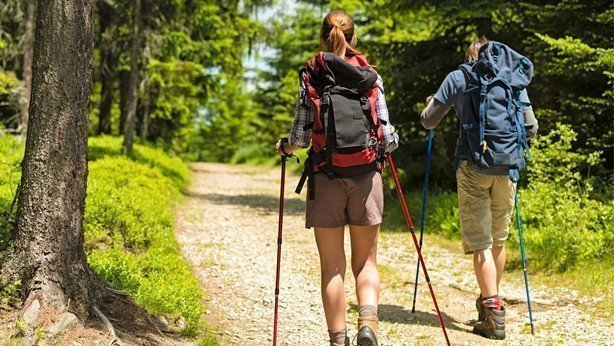KINESIOTHERAPY
KINESITHERAPY INDIVIDUAL
PASSIVE EXERCISE
The exercise of these movements in the joints of the patient performs kinezyterapeuta- hence the name passive exercises. They qualify for these exercises the muscles whose strength is assessed on the border of 0-1 degree scale.
Objective:
- swapping passive movement to open
- in the muscles where the pathological changes rules out such possibilities
- is used in order to maintain efficiency and to maintain mobility
- delaying the progression of degenerative
- prevent contractures and joint zesztywnieniom
- prevent swelling zastoinowym
- to prevent adhesions in the pond
- facilitating blood circulation and lymph
- prevent bedsores
- behavior proprioceptive sensory and motor memory
indications:
- prepare limb movement after a long immobilization
- cardiovascular disease
- early stage of myocardial infarction
- paralysis and paresis of muscles
- after surgery
- paresis and paralysis of skeletal muscle
- increased tension spastic muscles
- unfixed limit joint mobility
- evil trophics soft tissue
- the need to maintain adequate length and flexibility in muscles
EXERCISES-PASSIVE OPERATIONS
They are based on our own strength usprawnianego and the external force is here merely to assist. Sometimes it is necessary to apply relief or assistance in starting the movement.
Objective:
- strengthening the weak muscles
- memorizing movement patterns
indications:
- conditions after surgical reconstructive surgery reconstructive organ motion
- rheumatoid diseases
- immobilizing limbs using extracts redresyjnych
- states tissue atrophy
- bone demineralization
EXERCISE ACTIVE
Done by the patient under the supervision of a physiotherapist
Objective:
- preventing muscular atrophy
- gain strength
- prevention of contractures
- increasing the range of motion
indications:
- atrophy and significant muscle weakness
- weak bone union
- lesions joints
isometric exercise
It is a form of strength training, strengthening the muscles. It is based on muscular tension without changing their length
Objective:
- gain muscle growth
- prevention of muscle atrophy
- providing efficiency and muscle function, and the body part immobile
indications:
- small and simple muscular atrophy
- states immobilize the limb, causing muscle atrophy from inactivity
EXERCISE SAMOWSPOMAGANE
The exercises samowspomaganych sick by doing one limb movement supports the execution of movement in the joints of the second leg, while increasing its scope. These exercises are a link between the group of active and passive exercises.
Objective:
- increase joint range of motion
- to get excessively loosening tight muscles
indications:
- preparation for the manipulation (removal of contracture)
- preparation for active exercises free
- improve muscle trophic
- maintain joint range of motion
- prevention of adverse changes resulting from the standstill
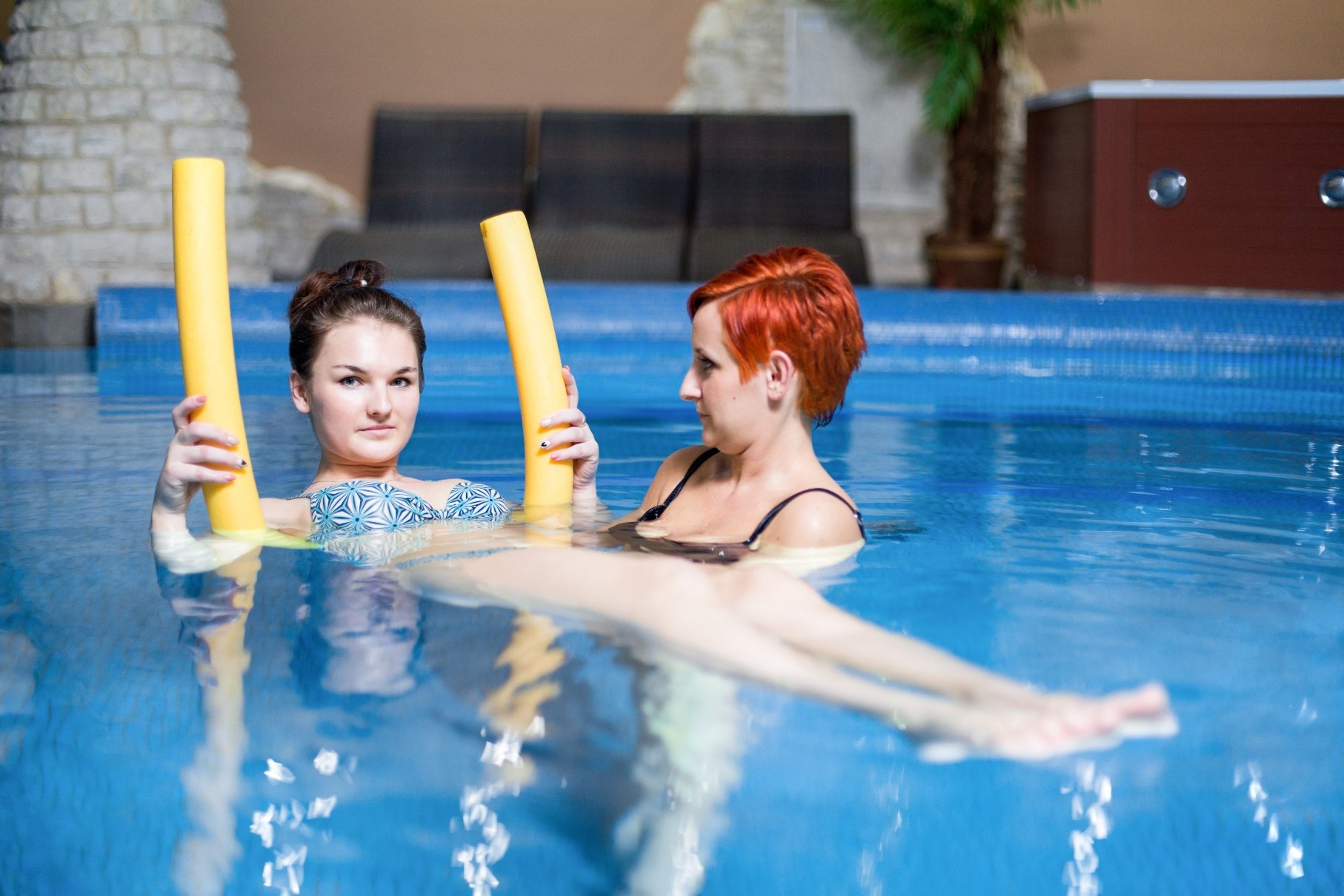
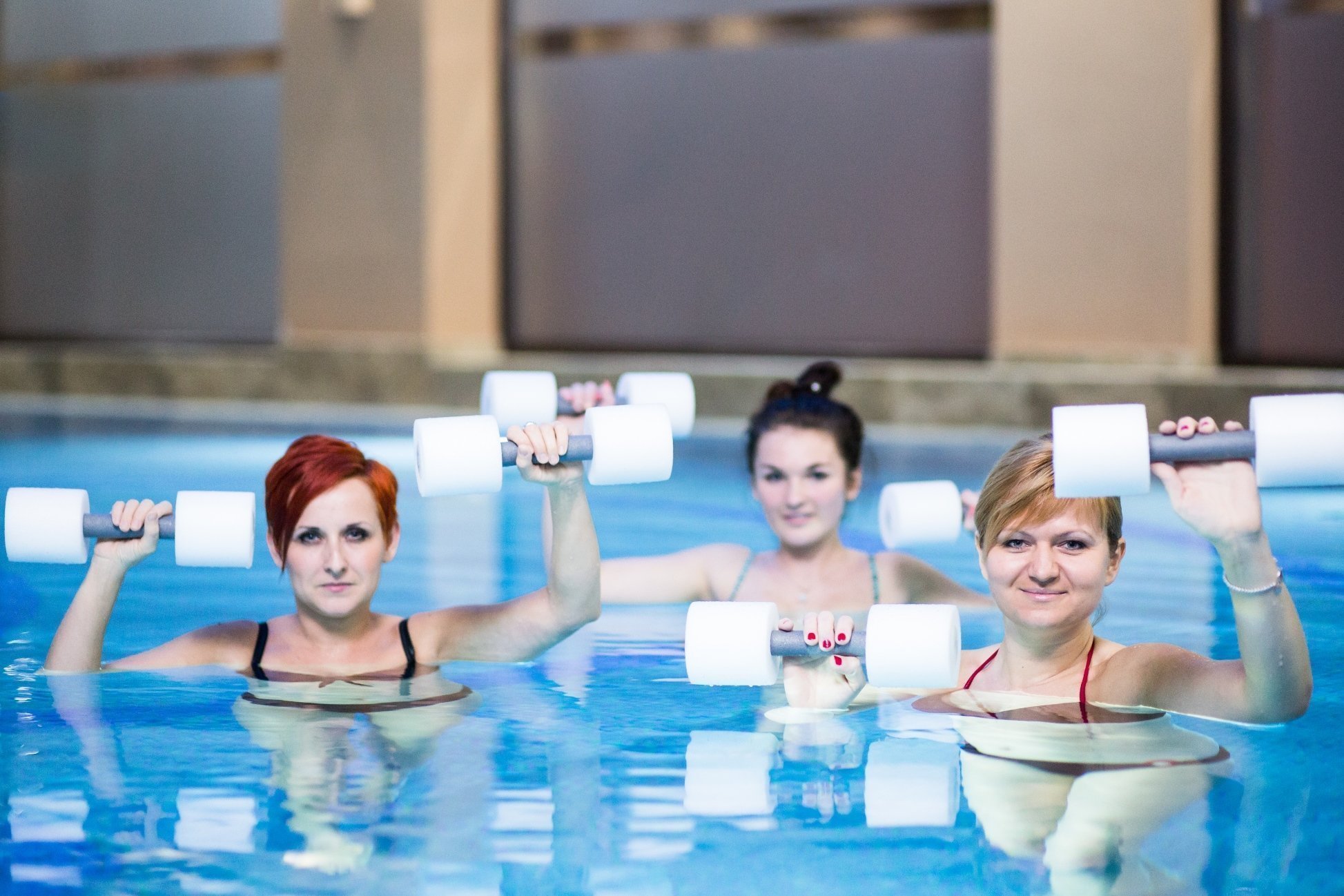
KINETIC GROUP - otherwise movement therapy, physical exercises. Movement affects the entire body. The aim of physiotherapy is to improve the musculoskeletal system as much as possible. Exercises are conducted both in the halls and pool complex.
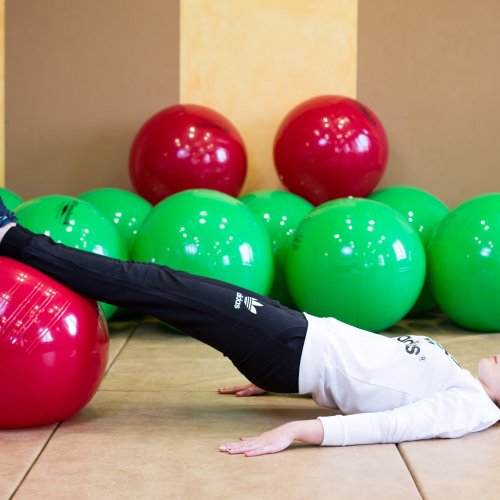
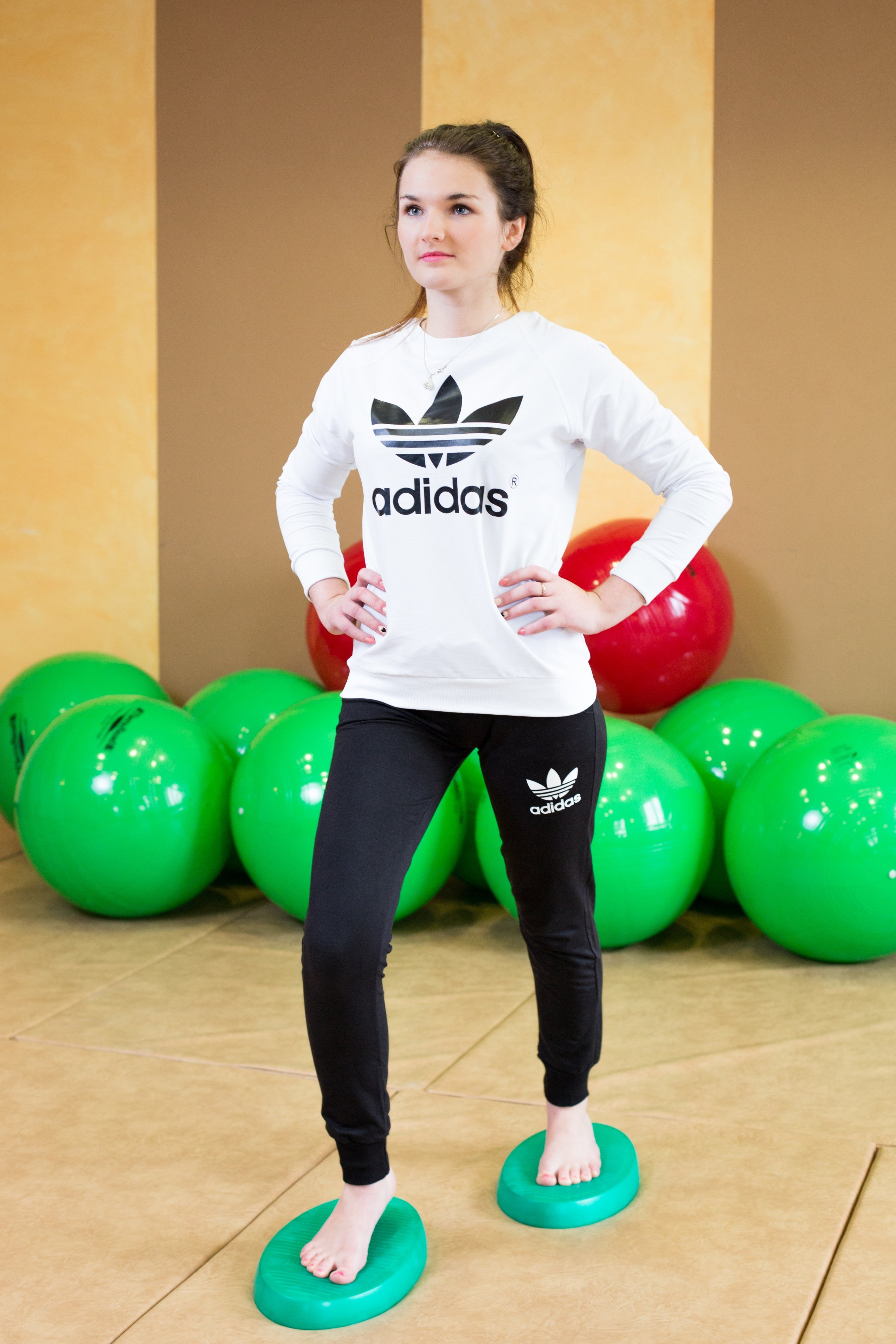
EXERCISES UGULu
UGUL, or Universal Cabinet Rehabilitation SPC. The exercises are often used when dealing with muscle weakness.Their goal is to prevent muscular atrophy and achieve gains in strength. Also prevent contractures and to increase range of motion. UGUL to perform the following exercises:
EXERCISE ACTIVE no-load
These exercises consist of an independent traversing the joints with a load rehearsed section of the body.
Objective:
- preventing muscle atrophy
- obtaining gains in strength
- prevention of contractures in the pond
- increasing the range of motion in the pond
indications:
- decays and significant muscle weakness
- incomplete synostosis
- degenerative arthritis
- limitation of motion in the joints
- conditions after immobilization
- pain syndromes within the musculoskeletal system
EXERCISES WITH ACTIVE RESISTANCE
Active exercises with resistance rely on independent execution of movements in the joints of the patient while overcoming additional external force or resistance.
Objective:
- achieve growth of muscle strength
- improving muscle endurance
- minimization of muscle atrophy resulting from immobilization or pathological processes
- delay the occurrence of muscle atrophy
- obtaining compensation excesses forces
- obtaining improve neuromuscular coordination
indications:
- muscle weakness
- immobilization conditions (eg. gypsum)
EXERCISE ACTIVE FREE
There are exercise by the patient and therapist on command under its control.
Objective:
- increasing the strength and endurance of a specific muscle group
- maintain and increase the ranges of motion in the joints
- improving coordination
indications:
- muscle weakness
- limit range of motion
- increased resting muscle tension
- disorders of neuromuscular coordination
CORRECTIVE GYMNASTICS (individual and group) - are classes for children in preschool and school age.
The main objective of these activities is to restore proper posture and habit of maintaining posture corrected during daily activities. To restore the proper functioning of the movement are working to restore the balance of muscle tone and normal range of motion in the joints. During the classes we implement the exercise, so that the weakened muscles are amplified, while the muscles are stretched przykurczone.
Exercises are tailored individually to the needs of each child and its features.
Types of posture:
- defects of the spine (back round, concave back, back round-concave, flat back, curvature of the spine,
- defects of the chest (funnel, chicken)
- defect setting head and neck (sliding forward, torticollis)
- defects Vane (asymmetry, shoulders skrzydełkowate-protruding)
- defects of the lower limbs (valgus, varus)
- defects feet (flat static, flat-valgus, Clubfoot, hollow, flat cross, horse, heel, anomalies - valgus, stiffness, młoteczkowatość etc.).
GYMNASTICS WATER
Exercising in the water is one of the forms of rehabilitation used for a long time. They can be used by people of all ages. Movement in the water is pleasant and at the same time provides help with rehabilitation.
With aqua gym lessons are held in the pool under the windows of a qualified instructor. The advantage of this form of exercise is that it brings much better results than regular exercise. This is because with every movement overcome the resistance of water, what makes you such exercise compared with exercise with weights. What's more, exercise in water is made almost effortless, and yet improve the shape, sculpt the silhouette and fully relax.
The main characteristics of rehabilitation in water:
- decreased muscle tone
- prevents complications
- It provides additional relief so that the exercises are performed easier
- reduction of pain
- increase the mobility of joints
- increase of well-being
With this rehabilitation can benefit people with different disease entities such as .:
- Cerebral Palsy
- incompleteness intellectual
- down syndrome
- autism
- children with developmental disorders
- scoliosis
- posture
- backaches
- conditions after injuries
- postoperative
Classes rehabilitation of water leads instructor.
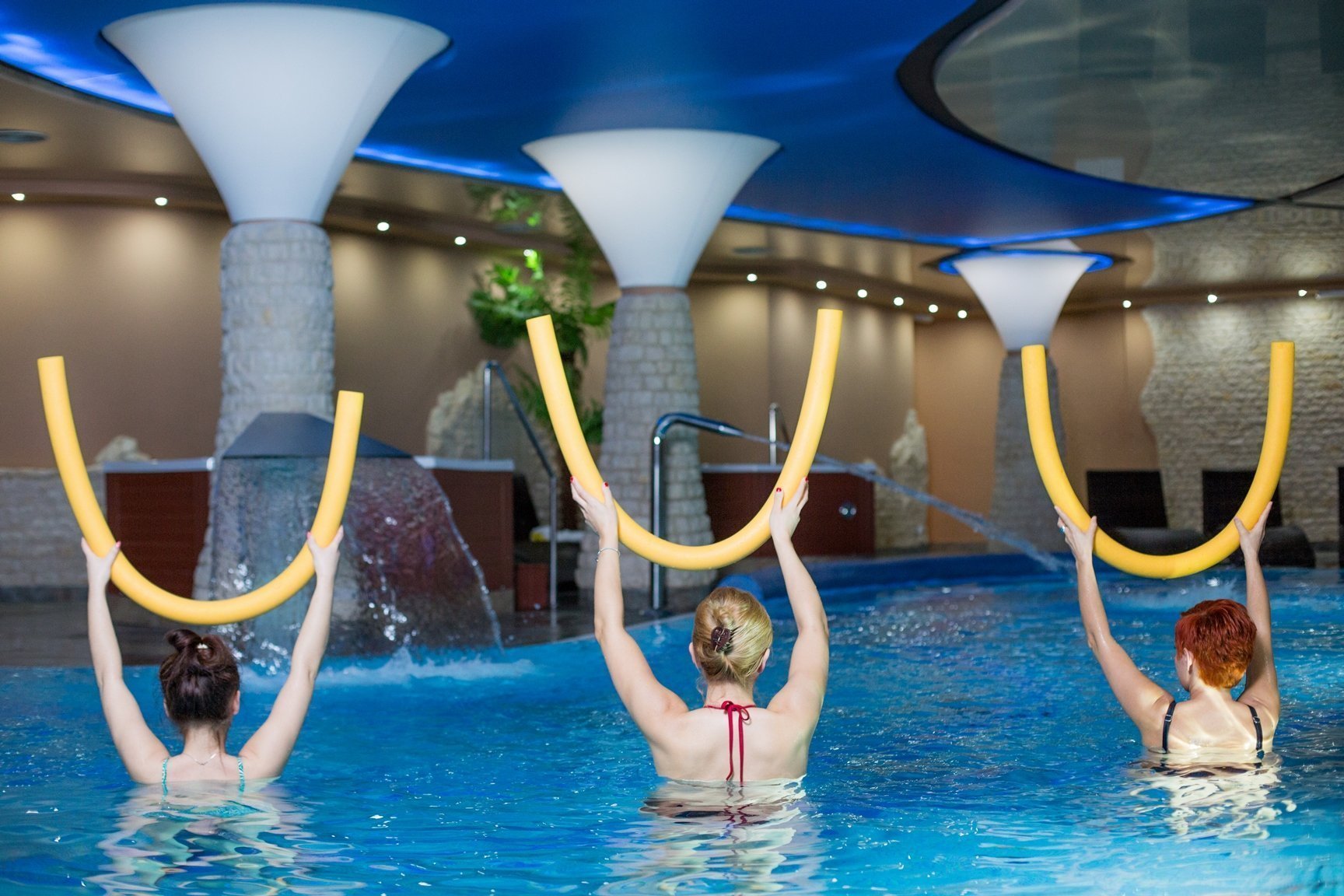
PHYSICAL TRAINING - NORDIC WALKING
Nordic walking is a form of walking using special poles similar to those used in cross-country skiing. Nordic walking in spite of the short history occupies an important place among other forms of movement, not only as a form of recreation or to complement and diversify training in some sports, but also is used in treatment programs. In this study the effects of training were found, among others, increase in maximal oxygen uptake, the heart rate and energy expenditure during Nordic walking compared to walking without poles. In addition, an improvement was observed parameters characterizing the activity of the cardiovascular system, body composition, exercise capacity and quality of life for persons with control groups. It has been observed beneficial effect of Nordic walking in the elderly and in patients after acute coronary syndrome, of intermittent claudication, coronary artery disease and myocardial infarction, chronic obstructive pulmonary disease, type 2 diabetes.
The place perfectly suited for this type of exercise are scenic areas of the Cracow - Czestochowa.
